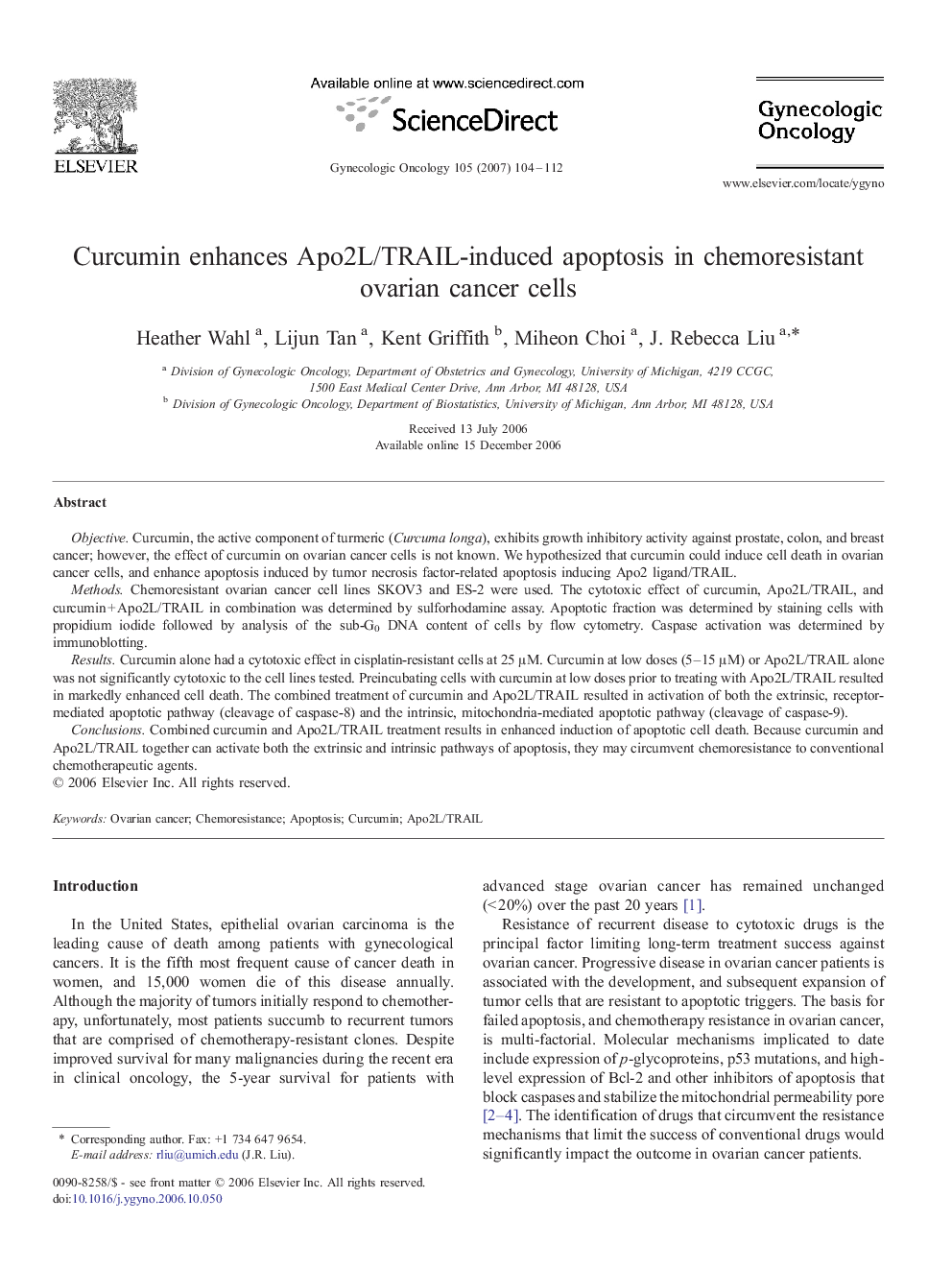| Article ID | Journal | Published Year | Pages | File Type |
|---|---|---|---|---|
| 3944965 | Gynecologic Oncology | 2007 | 9 Pages |
ObjectiveCurcumin, the active component of turmeric (Curcuma longa), exhibits growth inhibitory activity against prostate, colon, and breast cancer; however, the effect of curcumin on ovarian cancer cells is not known. We hypothesized that curcumin could induce cell death in ovarian cancer cells, and enhance apoptosis induced by tumor necrosis factor-related apoptosis inducing Apo2 ligand/TRAIL.MethodsChemoresistant ovarian cancer cell lines SKOV3 and ES-2 were used. The cytotoxic effect of curcumin, Apo2L/TRAIL, and curcumin + Apo2L/TRAIL in combination was determined by sulforhodamine assay. Apoptotic fraction was determined by staining cells with propidium iodide followed by analysis of the sub-G0 DNA content of cells by flow cytometry. Caspase activation was determined by immunoblotting.ResultsCurcumin alone had a cytotoxic effect in cisplatin-resistant cells at 25 μM. Curcumin at low doses (5–15 μM) or Apo2L/TRAIL alone was not significantly cytotoxic to the cell lines tested. Preincubating cells with curcumin at low doses prior to treating with Apo2L/TRAIL resulted in markedly enhanced cell death. The combined treatment of curcumin and Apo2L/TRAIL resulted in activation of both the extrinsic, receptor-mediated apoptotic pathway (cleavage of caspase-8) and the intrinsic, mitochondria-mediated apoptotic pathway (cleavage of caspase-9).ConclusionsCombined curcumin and Apo2L/TRAIL treatment results in enhanced induction of apoptotic cell death. Because curcumin and Apo2L/TRAIL together can activate both the extrinsic and intrinsic pathways of apoptosis, they may circumvent chemoresistance to conventional chemotherapeutic agents.
